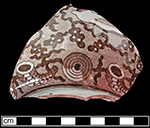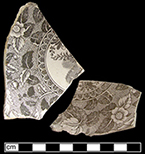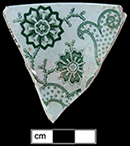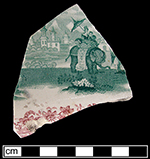Click on individual image to see larger view
Unless stated otherwise, all vessels shown are plates.Colors
Bull's
Head Tavern (18BC139)
Feature 9
Dark Blue
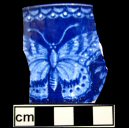
Cup



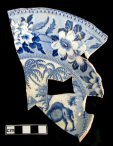

Cup
18BC33 Federal Site/Block 1370
Feature 14 Privy
(Filled c. 1830s with garbage from
an earlier household)
Purple
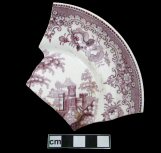

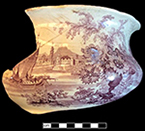

earthenware chamberpot in the Persian
pattern by William Ridgways (1830-1854).
Rim diameter: 7.0”; Base diameter: 5.75”;
Vessel height: 5.0”
Jackson Homestead 18MO609
Brown
Brown


Cup
Back to: Top | Ware Essay
